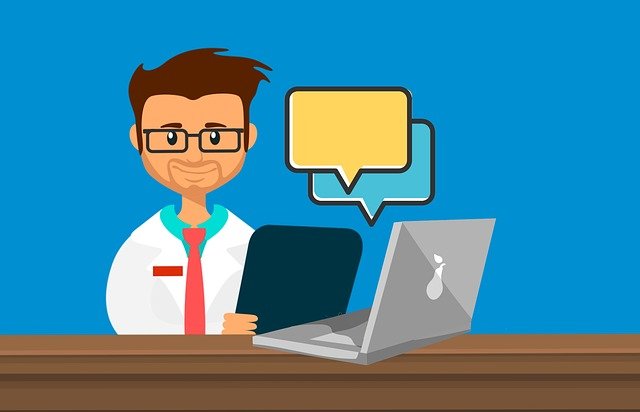
Canada Health Infoway helps to set Canadian standards for health terminology and data exchange. These standards help to facilitate accurate interpretation and exchange of health data among the various digital health solutions for health care providers and researchers. As taken from their website:
Health standards used in Canada provide the clinical terminology and system communications that enable the thousands of health care providers across the country to communicate and share health information in a consistent, unambiguous, safe, and reliable manner.
When used in digital health solutions, these standards support:
- Safe and secure exchange of health care information (e.g. drugs, labs, diagnostic imaging) across the continuum of care
- Clinical decision support (e.g. alerts and reminders)
- Synoptic reporting (e.g. cancer care management)
- Population health management (e.g. screening, public health)
- Data analytics (e.g. performance management, research)
Health Data Exchange Tools in Ontario
Reference: (ehealthontario.on.ca)
ConnectingOntario
The ConnectingOntario ClinicalViewer is a secure, web-based portal that provides real-time access to digital health records including dispensed medications, laboratory results, hospital visits, Local Health Integration Networks’ (LHIN) Home and Community Care Services mental health care information, diagnostic imaging reports and images.
Activity #1
Let’s take a look at how ConnectingOntario is assisting health care providers in patient care.
Video: Digital health solutions transforming emergency patient care (2:08)
ClinicalConnect
ClinicalConnect is a secure, web-based portal that gives health care providers real-time access to their patients’ electronic medical information from all acute care hospitals, Local Health Integration Networks’ (LHIN) Home and Community Care Services and Regional Cancer Programs in Southwest Ontario, in addition to various provincial clinical data repositories.
Activity #2
Let’s take a look at how ClinicalConnect is assisting health care providers inpatient care.
Video: How ClinicalConnect is enhancing patient care in Ontario (1:06)
eHealth Portal
eHealth Portal is a secure, web-based viewer that offers health care providers, that may not have access to one of the provincial clinical viewers, a single point of access to their patients’ digital health information. Eligible health care providers can access lab results, diagnostic images, drug data and other health-related information and applications, giving them a more complete picture of their patients’ health, which supports better decision-making and care.
What are the benefits of using digital health clinical viewers?
- Provide a comprehensive view of a patient’s health from across the province
- Enable health care providers to make faster, more informed care decisions
- Improve workflow and efficiencies at the point of care with a more complete picture of a patient’s health profile, available 24/7
- Reduce duplication of tests and procedures, saving time, system costs, patient discomfort and travel
Ontario’s Clinical Data Repositories (Storage):
The Acute and Community Care Clinical Data Repository provides access to patient information from hospitals and home and community care organizations across Ontario. It includes information about patients’ hospital visits, emergency room reports, consultation reports and discharge summaries as well as long-term placement details, client risks, assessments, and care plans. Data can be accessed via ConnectingOntario and ClinicalConnect.
The Diagnostic Imaging (DI) repositories give authorized health care providers access to diagnostic images and corresponding reports from hospitals and independent health facilities within their region. Immediate access to DI images, reports and studies from other sites helps providers make faster diagnoses without having to wait for the physical transfer of images or CDs to specialists. Data can be accessed via ConnectingOntario, ClinicalConnect and eHealth Portal.
The Digital Health Drug Repository (DHDR) represents the first foundational component of the Ministry of Health and Long-Term Care’s Comprehensive Drug Profile Strategy (CDPS). The CDPS aims to improve the health and wellness of Ontarians and the quality of care they receive by providing health care providers with information to enable the Best Possible Medication History for a patient. Data can be accessed via ConnectingOntario and ClinicalConnect.
The Ontario Laboratories Information System (OLIS) gives authorized health care providers access to lab test orders and results from hospitals, community labs and public health labs. As patients move between hospitals, family physicians, home care and long-term care settings, OLIS makes viewing patients’ current and past test results easier and enables treatment decisions to be made at the point-of-care. Data can be accessed via ConnectingOntario, ClinicalConnect, eHealth Portal, EMRs, and local clinical viewers.
How Does All this Patient Data Remain Secure??
eHealth Ontario provides health care providers with authenticated secure access to clinical viewers using a ONE ID account. This ensures patient data is protected and only accessible by authorized users.
ONE Mail is an encrypted email solution that allows healthcare professionals a secure way to send PHI externally to other care providers.
Patient Portals
Patients currently do not have access to their EHR or health data repositories. Many hospitals and clinical practices are offering digital patient portal solutions. Patient portals offer secure ways for patients to access their health data and take more ownership over their healthcare. Settings and permissions differ among portals but many offer appointment reminders, scheduling options, check-in tools, access to lab results, select reports or clinical notes, medication lists, allergies, immunization records, and some even offer secure non-urgent messaging with care providers. They may be stand-alone solutions or integrated with an EMR.
Activity #3
Let’s take a look at a couple of available patient portal solutions.
Video: TELUS EMR Patient Portal Demo Video (3:31)
Video: Cool Features in MyChart (For Mobile) (6:25)


